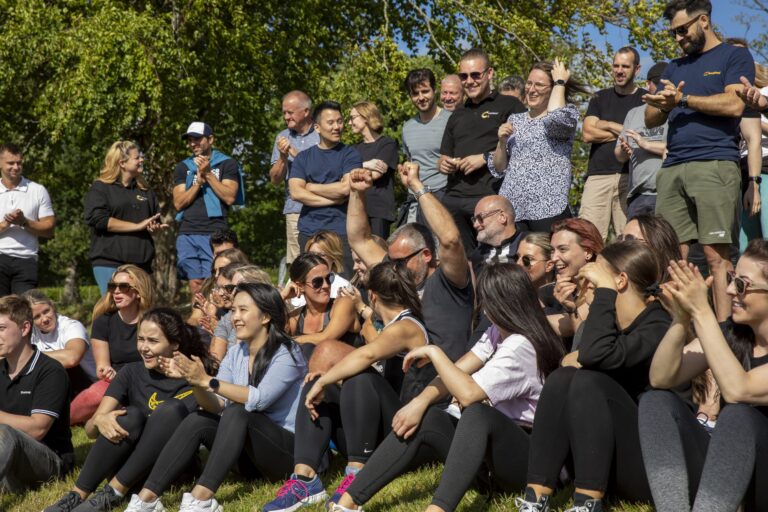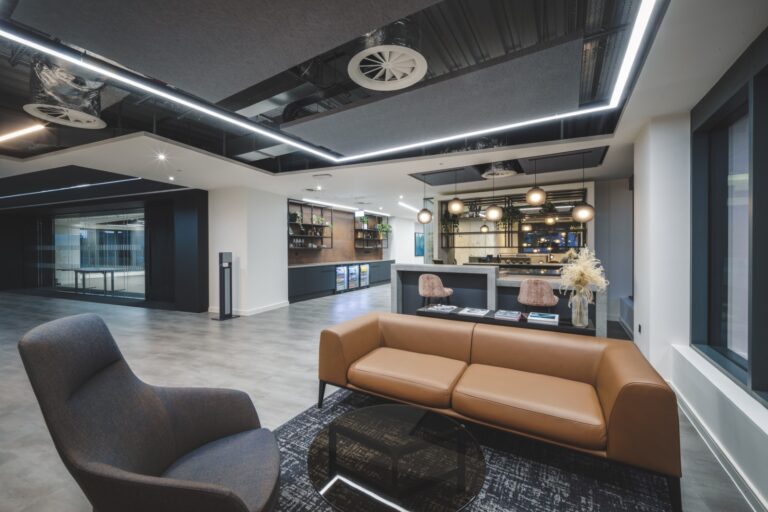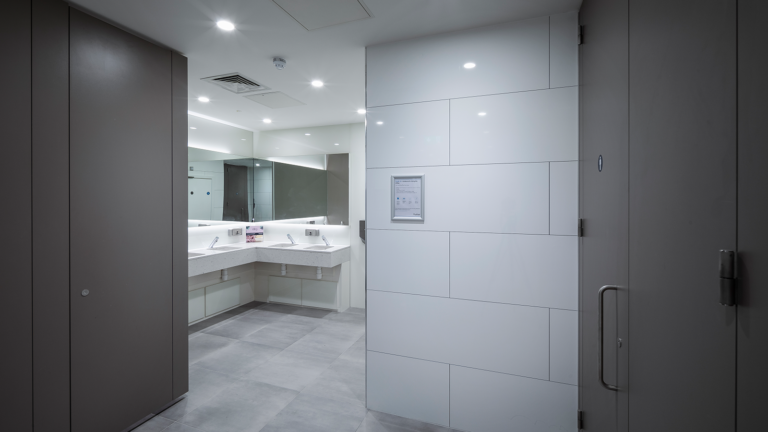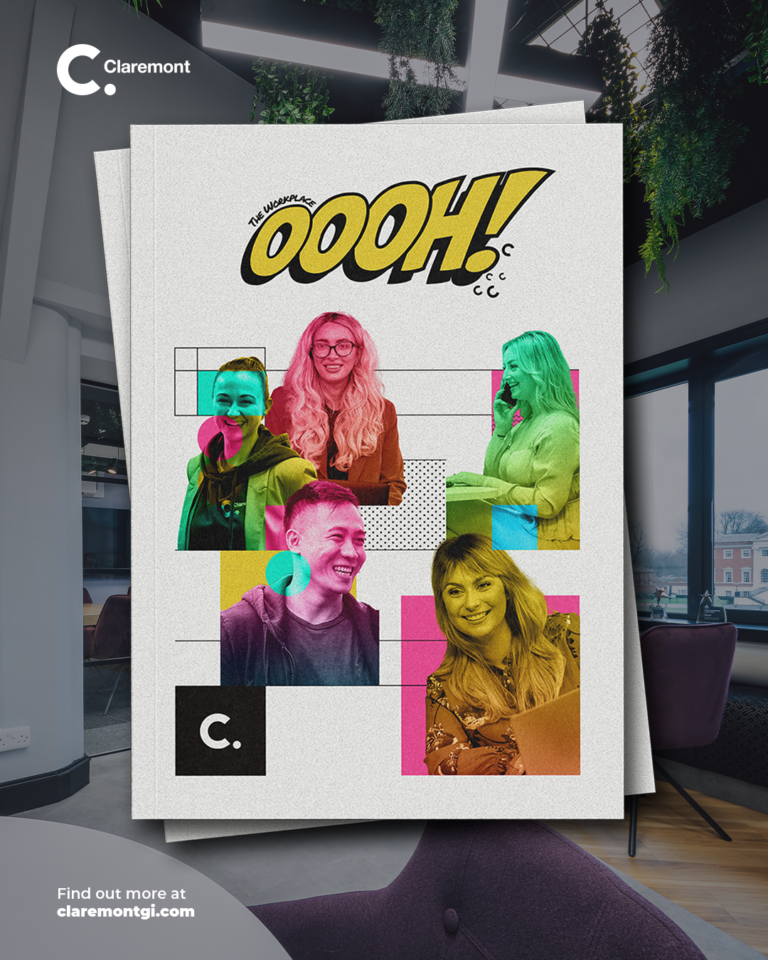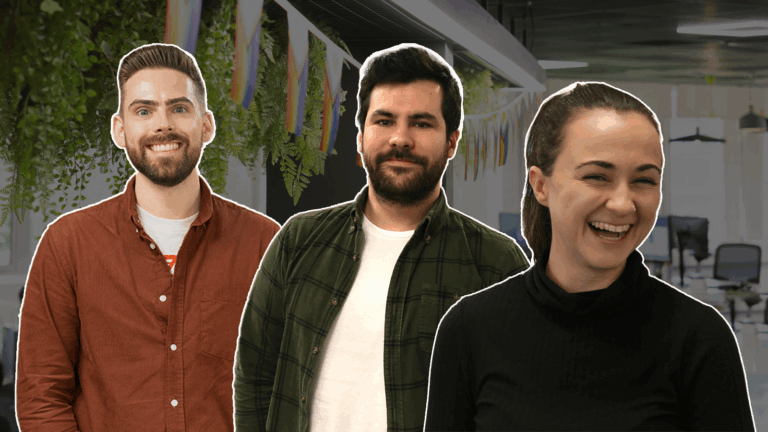
Beyond Aesthetics: How Design Can Drive Social Inclusivity.
Date
7 June 2023
Read length
5 min
As we welcome the month of June, we expect the blue skies and the sunshine, but you might also notice a significant number of rainbows everywhere you go! June is Pride month, a month to recognise and celebrate the LGBTQ+ community.
We sat down with a couple of our designers at Claremont, Quentin and Marcus, to discuss what inclusivity means to them – how to foster a culture of inclusivity through interior design, the benefits of an inclusive workplace, and their own personal experiences at work.
BT – On some level, we all understand an inclusive culture is great to be part of, but what are the benefits of inclusivity at work?
QP – When we think of inclusivity, it’s easy to imagine those stock images of a happy workforce, working collaboratively and socialising with each other. Of course, this is a brilliant by-product of inclusivity, but there are also some real tangible benefits to the business performance and colleague wellbeing, which we all know are highly correlated.
MB – Inclusivity brings a sense of belonging and psychological safety to colleagues, an acceptance of individuals for who they are without having to mask parts of their identity. This allows colleagues to stop pumping their energy into hiding parts of themselves (honestly, it’s exhausting), and means they can truly perform at their best. Productivity, creativity and engagement increases, whilst colleague attrition and stress decreases. Generally, it makes for a much more high performing workplace where people want to be, which makes all the difference in a hybrid working world where people may be offered more flexibility and choice over working location.
BT – Ok, so we understand the benefits of inclusivity, but how do we go about designing workspaces for inclusivity?
MB – For us at Claremont, it is fundamental within our design ethos that inclusivity brings an opportunity for everybody to enjoy the same experience of the workplace, not through an individual’s request for ‘reasonable adjustments’, but through equitable design considerations right from the outset. This ensures people feel valued as soon as they even approach the workplace, feeling that their individual needs have been recognised.
Inclusive and equitable design considerations reach a whole plethora of diversities, such as physical mobility, neurodiversity, religious diversity, mental health, visual or hearing impairments… among others, but how can we support the LGBTQ+ community through workplace design?
QP – Well, the typical go-to is the introduction of gender-neutral toilets within the workplace. Now, this is a topic that often is fraught with backlash, with many people expressing discomfort with sharing the toilet facilities with somebody of the opposite gender. However, if you have the space, opting for the self-contained ‘super-loos’, which include the toilet, wash basin, dryer etc. within the cubicles themselves ensures a safe and inclusive gender-neutral option.
Naturally, space or financial constraints may mean this option isn’t always feasible, and the gender-neutral toilet defaults to the ‘disabled’ toilet. If this sounds familiar, we’d recommend a simple change to the signage and language around that toilet – adding in a gender-neutral sign to the door, as well as a rebrand from ‘disabled’ to ‘accessible’ toilet. Please do be mindful, however, that best practice would be to create gender neutral facilities that don’t infringe on the availability and accessibility of the designated ‘accessible’ toilet as those with an impairment may require quick and immediate access due to a condition.
As well as gender-neutral toilet facilities, inclusive design for the LGBTQ+ community may include a variety of spaces for individuals to express themselves authentically, such as collaboration spaces to foster open conversation and creativity or social spaces to spontaneously connect with colleagues, as well as offering private, calming spaces of refuge for some time to recharge throughout the day. These private recharge spaces may also become a convenient place to store and administer any gender-affirming hormone treatments or a space to control the ambient environment if required.
Whilst the LGBTQ+ community has been a focus of consideration for these design elements, they may benefit everyone within the space – for example, the recharge space would be great for the neurodivergent community, those experiencing menopause, nursing mothers, faith and really just anybody who may be feeling overwhelmed or who needs to take 5 throughout the day. It’s all about creating a holistic workplace experience that supports everyone.
BT – Have you noticed any notable changes in the general approach to workplace design to support a diverse workforce in a post-covid world?
QP – We absolutely have noticed a real shift towards a more experience-led approach to workplace design. We recently commissioned some independent research (see The Workplace Oooh!) that found 84% of today’s employees EXPECT the office to deliver an experience. This shift has predominantly been led by the widely adopted hybrid model of working, where people have more control over where they work, where the workplace experience needs to ‘earn their commute’. Many of our clients are now putting much more weight on providing wellbeing support through office design, creating a safe haven for the LGBTQ+ community in the workplace.
Where there may have been prior resistance to some of these inclusive design elements due to budgets (let’s be honest, they’re usually the first things to get cut when value engineering!) or even progressive change (“but we’ve always done it this way!”), we’re now seeing much more openness to the conversation about inclusive design, and not just as a box-ticking exercise!
There’s no doubt that change is a scary thing, but as designers, we’re here to help our clients along that journey through providing as much justification for these inclusive design elements as possible – whether based on the impact on their bottom-line or around the impact on their people, culture and community. We’re essentially here to ensure that our clients have as much insight to make informed decisions on their future workplace, a space that works for them.
BT – As a member of the LGBTQ+ community, could you talk a little bit about your own experiences within the workplace?
QP – Personally, I’ve been very lucky to have not experienced discrimination in the workplace, although I have certainly felt as though I was just a number on a diversity spreadsheet at times in my career. At first you feel seen when you’re asked questions about your experience as a member of a minority group, but when you can see that your answers are not being used as a force for change and inclusivity, rather just for diversity reporting purposes, it can feel a bit disheartening.
MB – Joining Claremont, particularly as an Employee Owned organisation, I instantly felt as though I had a voice, and that my voice was being truly listened to. For example, being part of the planning of Pride Month related activities was something that I’ve never done before, and really helped me feel represented and seen in the workplace – something that’s so important when there’s still so much discrimination towards the LGBTQ+ community still. Something Claremont does really well is to express openness to conversations, to be curious and aware of areas of inclusivity we can continue to develop, and then make actionable, progressive changes in order to continually evolve.
See how we could help with your new office interior design or office design and build project here
Get in touch
We love nothing better than talking all things workplace and design – got a question, potential project or just need some guidance?
Drop us a note…


